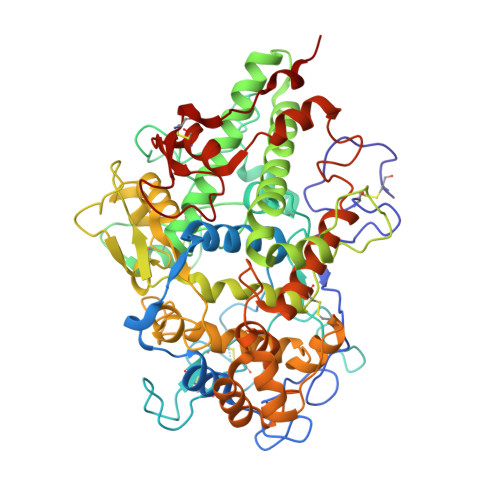Native glycosylation and binding of the antidepressant paroxetine in a low-resolution crystal structure of human myeloperoxidase.
Krawczyk, L., Semwal, S., Soubhye, J., Lemri Ouadriri, S., Prevost, M., Van Antwerpen, P., Roos, G., Bouckaert, J.(2022) Acta Crystallogr D Struct Biol 78: 1099-1109
- PubMed: 36048150
- DOI: https://doi.org/10.1107/S2059798322007082
- Primary Citation of Related Structures:
7OIH - PubMed Abstract:
Human myeloperoxidase (MPO) utilizes hydrogen peroxide to oxidize organic compounds and as such plays an essential role in cell-component synthesis, in metabolic and elimination pathways, and in the front-line defence against pathogens. Moreover, MPO is increasingly being reported to play a role in inflammation. The enzymatic activity of MPO has also been shown to depend on its glycosylation. Mammalian MPO crystal structures deposited in the Protein Data Bank (PDB) present only a partial identification of their glycosylation. Here, a newly obtained crystal structure of MPO containing four disulfide-linked dimers and showing an elaborate collection of glycans is reported. These are compared with the glycans identified in proteomics studies and from 18 human MPO structures available in the PDB. The crystal structure also contains bound paroxetine, a blocker of serotonin reuptake that has previously been identified as an irreversible inhibitor of MPO, in the presence of thiocyanate, a physiological substrate of MPO.
Organizational Affiliation:
UGSF, CNRS, 50 Avenue de Halley, 59658 Villeneuve d'Ascq, France.






























